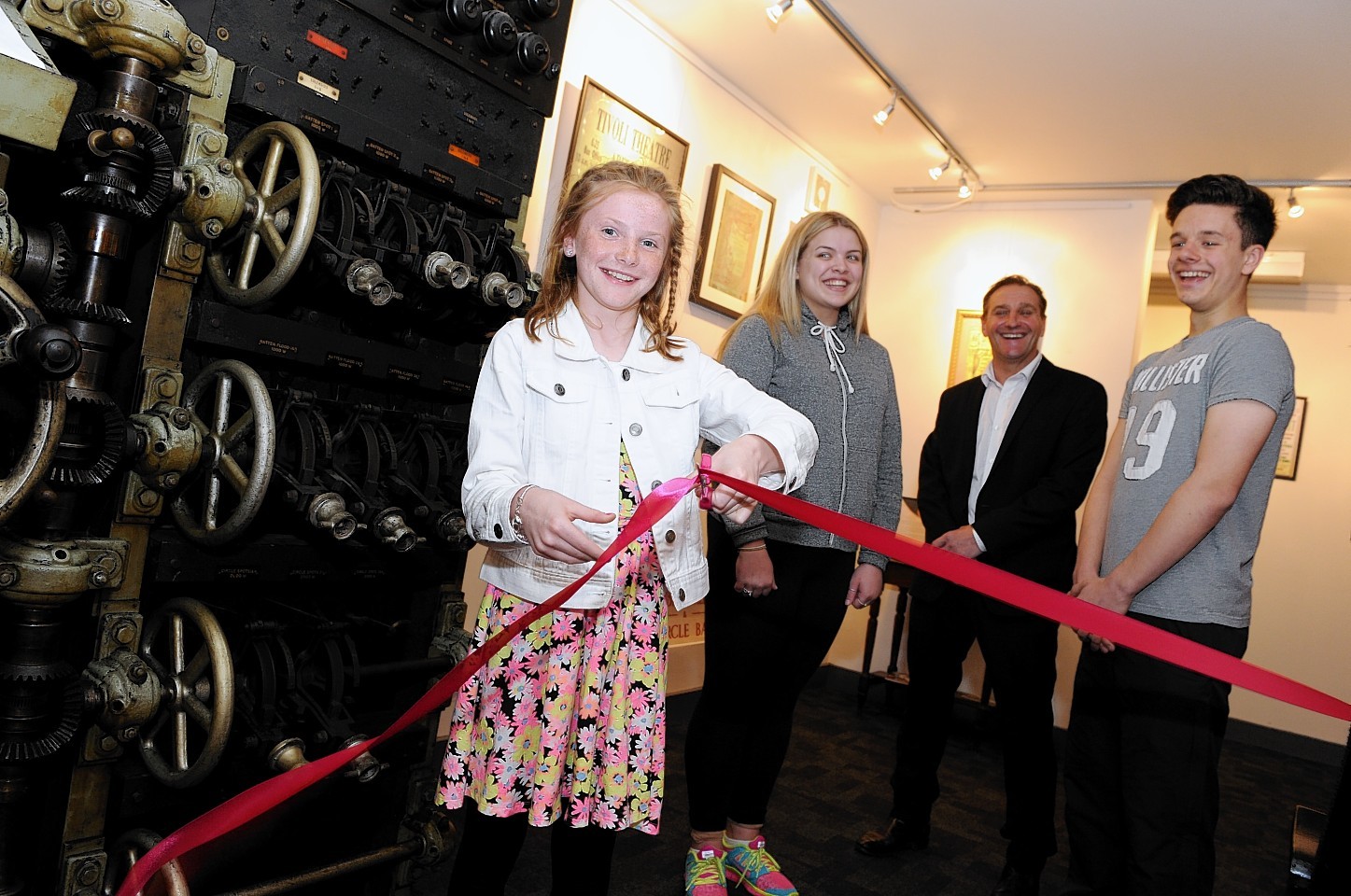A north-east businessman came one step closer to his dream of restoring a Victorian theatre to its former glory yesterday with the opening of a museum that pays tribute to its heyday.
Brian Hendry took over the Tivoli Theatre on Guild Street in 2009 after it had lain derelict for more than a decade.
The first two years were spent on maintenance, but since 2011 he has been putting on a performance every month to acknowledge the progress which has been made.
The theatre currently boasts 427 seats with another 100 to be added on the top level.
And yesterday the new Aberdeen Youth Musical Theatre was officially opened on the ground floor featuring a host of memorabilia associated with the history of the building.
Items on display included a rank strand grandmaster lighting machine with the lights still intact – one of only a few remaining in the world.
An original ledger covering the years 1946-51 provides a record of every single employee from the period and how much they were paid each week.
Visitors can also look at the title deeds for the theatre’s opening in 1872, one of which was signed by the iconic photographer George Washington Wilson.
The building was used as a bingo hall from 1966-98 and there are posters on display to acknowledge this period.
Mr Hendry, 56, said he was pleased to be able to breathe life back into an Aberdeen landmark.
He said: “I had no background in theatre, I was working at AVC Media and I saw the building had fallen into disrepair.
“It had been derelict since 1998 and would not have survived the winter of 2009.
“It was an A-listed building inside and outside and was on the list of buildings at risk in Scotland.
“The first two years were just spent stopping the roof leaking but since 2011 we’ve had a performance every month as we make progress.
“The building was a great theatre, all the greats played here including Charlie Chaplain and every great Scottish performer.
“The whole building is a museum, we use old lights and signs around the place but we’ll place the big artefacts in the youth museum.”
